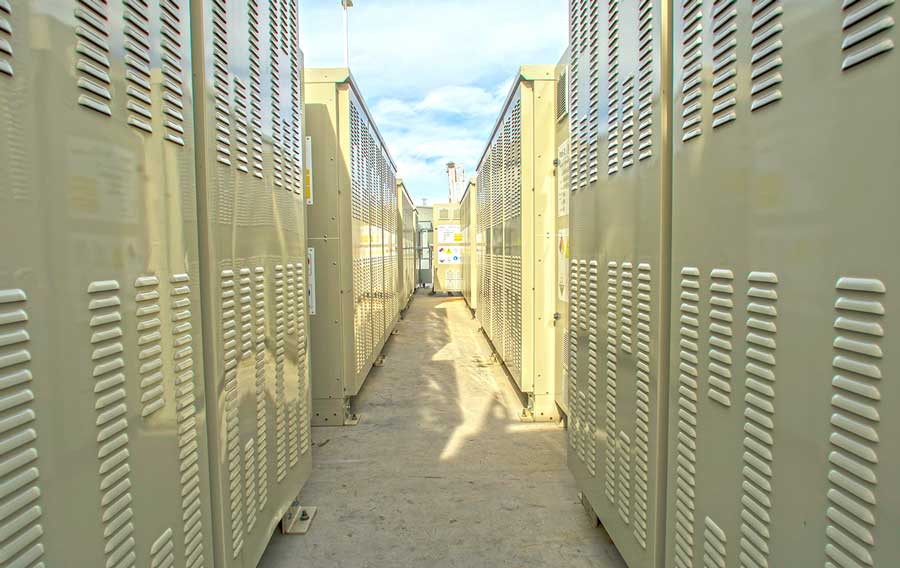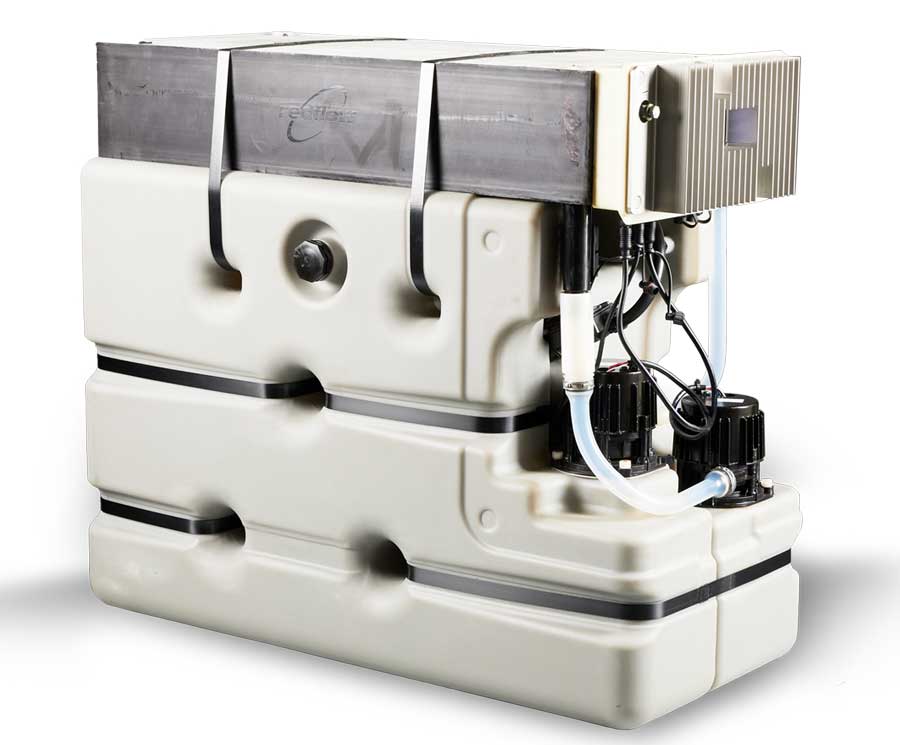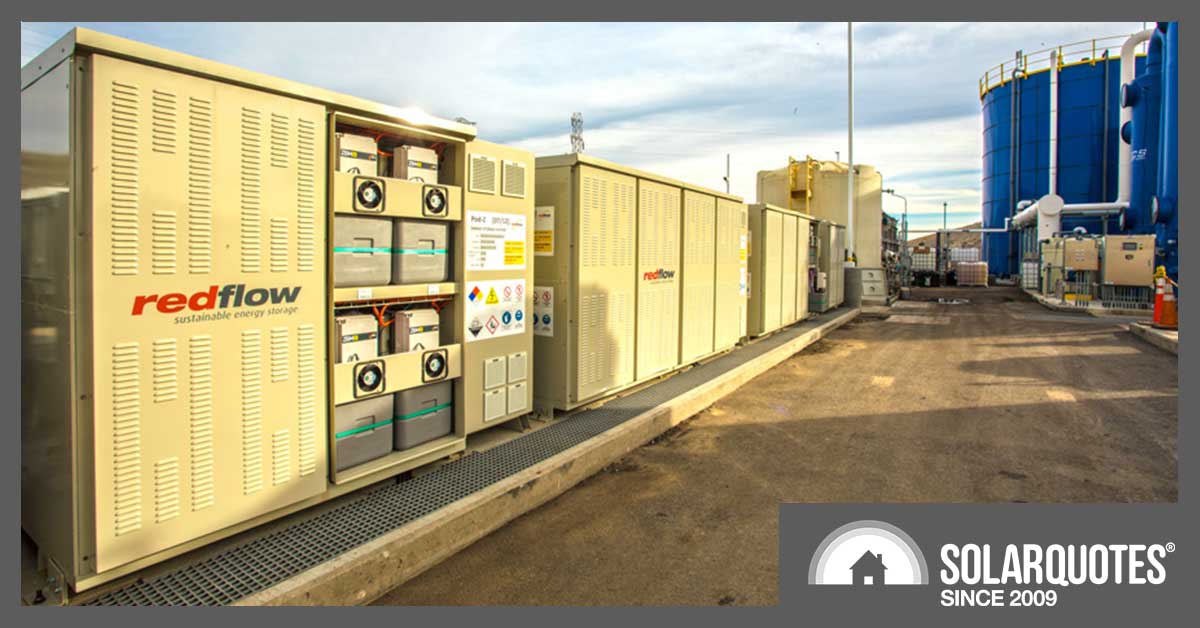Zinc-bromine flow battery specialist Redflow has signed its largest deal to date: $18 million to provide 2000 of its ZBM3 batteries to a Native American-owned microgrid in California.
In a statement to the Australian Securities Exchange (PDF), the company said it will be delivering the batteries this year and into 2024, for commissioning in the first quarter of 2025.
They are to be used in the Nomlaki Indians’ Paskenta Racheria Microgrid Project, a 20MWh long-duration energy storage fed by 5MW of solar power near Corning in California.
It’s Redflow’s largest single sale and deployment, and when operational, it will be one of the world’s largest zinc-based battery systems.
Energy Pod200 Units and ZBM3 Batteries Explained
The flow batteries will be installed as 100 x 200kWh pods imaginatively called ‘Energy Pod200‘ units.
Each energy pod is a 3m x 2m x2m, IP55 rated metal enclosure.

A Redflow Energy Pod200 installation
Each Energy Pod200 contains 20 x 10kWh ZBM3 flow batteries that look like this:

An individual Redflow ZBM3 battery with 10 kWh of storage.
Projected Impact and Financing of the Project
CEO and managing director Tim Harris said the battery will reduce the Paskenta Racheria’s grid demand, and boost its “energy security and sovereignty”.
The project is funded by the California Energy Commission (CEC), and will be delivered by Faraday Microgrids, which won the funding.
Redflow’s ASX announcement said it “expects to generate a positive return at the project level”, with the per-battery price in the order of AU$9000.
Brisbane City Council’s Relatively Tiny 30kWh System
The company also recently announced the commissioning of a system over 2 orders of magnitude smaller: a 30kWh battery for Brisbane City Council.
The council is using the installation at the Willawong Animal Rehoming Centre as part of a program to explore battery storage.
The centre’s critical load is refrigeration for vaccines and medications, making grid outages expensive.
The council’s media release said it “was looking for a reliable backup solution that would prevent these loads being affected by outages and ultimately losing vital and expensive animal medicines.”
Integration partner Bright Spark Group deployed the project, along with two Deye hybrid inverters that will support the future addition of solar PV to get more out of the batteries.
The Challenges of ZBM3 Deployment
The ZBM3 began shipping in July 2022, after a degree of tribulation for Redflow.
Customer trials had begun in 2020, and the company hoped to start deliveries in 2021, but Covid-related staff absence and delays to both equipment servicing and material supply held them up.
Thinking Of A Redflow ZBM3 Battery For Your Home?
If you like to do things differently – and are considering a Redflow battery for your home or business, you should be aware that they are a very different proposition to a conventional home battery. Ronald wrote this excellent explainer on Redflow’s zinc-bromide batteries 7 years ago. Despite the post’s age – it is still an excellent primer on the pros and cons of zinc-bromide technology.
At time of writing, we also have one Redflow battery review from a relatively happy owner in Australia.


 RSS - Posts
RSS - Posts



Speak Your Mind